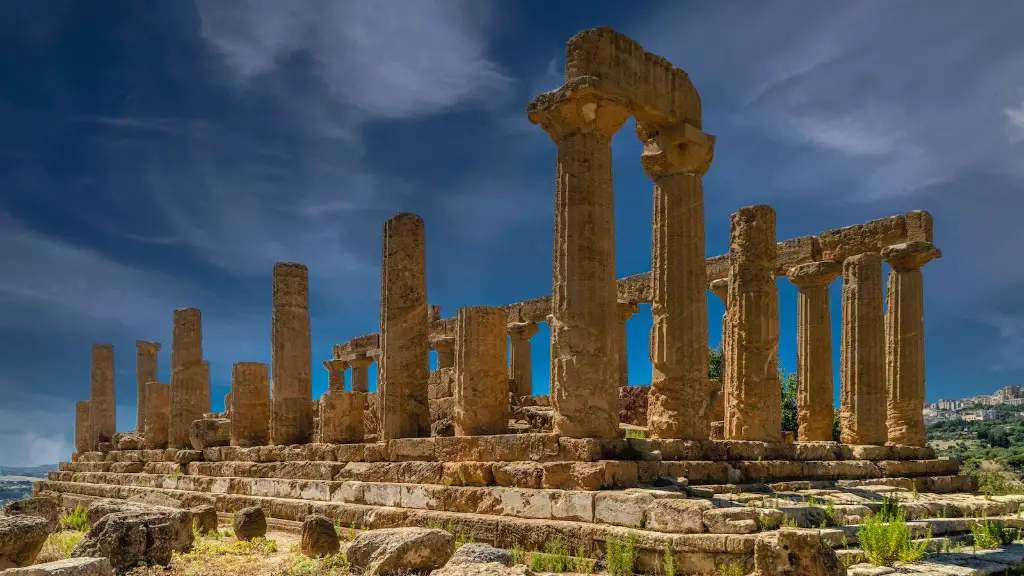The treatment of slaves in ancient Rome was highly variable, depending on the master’s social standing, the slave’s role in the household, and the general moral climate of the times. In general, however, slaves were considered property and were not afforded the same rights as free citizens. They could be bought and sold, beaten and worked to death, and their children could be taken away and sold as slaves. Slaves were sometimes able to earn their freedom, but this was a difficult and rare process.
The ancient Romans kept slaves as household servants, agricultural workers, and also as manual laborers. They were acquired through conquest, trade, and piracy. Slaves were seen as property and not as human beings. They were treated harshly and were often subject to physical and sexual abuse by their owners.
Were Roman slaves treated?
The lives of slaves were harsh. They were often whipped, branded or cruelly mistreated. Their owners could also kill them for any reason, and would face no punishment. Although Romans accepted slavery as the norm, some people – like the poet and philosopher, Seneca – argued that slaves should at least be treated fairly.
It is clear that women in ancient society were not held in the same high regard as men. Women could be honoured for their role as priestesses or family members, but they did not have the same legal or social standing as men. Slaves, by contrast, had no legal or social standing at all and could be treated as beasts of burden by their masters. This shows that women were not seen as equal to men in ancient society.
How were freed slaves treated in ancient Rome
Freedmen in Ancient Rome were a distinct social class, with former slaves who were granted freedom and rights through the legal process of manumission. Manumission was codified during the Early Republic, with three main legal forms being observed: Manumissio Vindicta, Censu, and Testamento. Freedmen enjoyed a number of rights and privileges, including the right to own property, to marry, and to vote. However, they were still subject to a number of restrictions, such as the inability to hold certain public offices.
Roman slaves who worked in fields or mines had the toughest and most tiresome lives. They would sleep in barn-like constructions, had little to eat, and wore chains around their feet that not only burdened them, but reminded them of their destiny without freedom. They were consumer goods who worked till death.
Did Romans marry slaves?
Slaves had no legal rights and could not marry, but if there was a partner in the life of a Roman slave, they would be entitled as a domestic to establish a family unit of sorts. However, the masters owned all of their children.
The games were seen as both a high and low art: lucky or successful gladiators could earn respect, admiration, money and social status through participating and winning. But many gladiators were also slaves, forced to compete and die for the entertainment of the people.
How did Romans identify slaves?
It was a common practice among slave owners to mark their slaves in order to easily identify them in case they escaped. The slaves would be tattooed, mutilated (to make the scar permanent), and have special collars placed around their necks. Some slaves even had these markings on their bodies when they were buried, suggesting that some were required to wear them for life.
There was a large number of educated slaves in Roman society who received their training in different ways. Some were self-educated, while others were instructed in formally organized schools located within the larger households, known as paedagogia. The education that these slaves received helped to prepare them for their roles in Roman society, and many of them went on to serve their masters faithfully for many years.
How did slaves resist their treatment
While the exact methods of resistance varied from plantation to plantation and from slave to slave, slaves resisted their treatment in innumerable ways. They slowed down their work pace, disabled machinery, feigned sickness, destroyed crops, and argued and fought with their masters and overseers. Many also stole livestock, other food, or valuables. While some forms of resistance were more effective than others, all served to chip away at the institution of slavery and the power of slaveholders.
Slavery was an integral part of Roman society and the economy. Slaves were acquired through purchase, capture, or inheritance and could be owned by individuals, families, or the state. The status of slaves varied depending on their origins and skills. Some slaves were freed by their owners, while others were manumitted as a result of a legal process.
What did slaves eat in ancient Rome?
The core staples for slaves were low-quality bread and cheap wine, but was also supplemented by average fruits and vegetables, as well as soups, stews, and other hot meals. Slaves were typically given one meal per day, usually in the evening, and the food was often monotonous and unappetizing. However, it was adequate to keep the slaves healthy and working.
Marriage in ancient Rome was strictly a monogamous institution: a Roman citizen by law could have only one spouse at a time. The practice of monogamy distinguished the Greeks and Romans from other ancient civilizations, in which elite males typically had multiple wives.
What was the Roman age of consent
In Roman society, the age of consent was twelve years. However, this applied only to free-born citizens. There was no age limitation for having sex with slaves.
In 2021, the median age for the first wedding among women in the United States stood at 286 years. For men, the median age was 306 years. The median age of Americans at their first wedding has been steadily increasing for both men and women since 1998.
The median age for the first wedding has been steadily increasing for both men and women in the United States since 1998. In 2021, the median age for the first wedding among women in the United States stood at 286 years. For men, the median age was 306 years.
What nationality were Roman slaves?
It is estimated that over time, anywhere from one-quarter to one-half of Rome’s entire population was made up of slaves. The majority of these slaves were from Greece, captured during the numerous wars between the two countries and subsequent Roman victories. The first great influx of Greek slaves into Rome occurred after the Roman defeat of the Macedonians at the battle of Pydna in 168 BC. From then on, Rome was renowned for its vast slave market, where Greek slaves commanded high prices due to their skills in literature, art, and philosophy.
In ancient Rome, slavery was a common institution and children born to slaves were also considered slaves. This meant that they were the property of their masters and had no rights of their own. However, the children of freed slaves were considered free citizens with all the rights and privileges that entailed. This was a major difference between the two groups and helped to solidify the social hierarchy in Rome.
Warp Up
The treatment of slaves in ancient Rome was often brutal and inhumane. Slaves were seen as property, and their owners could do whatever they wanted to them. They were often beaten, sexually abused, and forced to work long hours in terrible conditions. If a slave disobeyed their owner, they could be punished severely, or even killed. Although some slaves were treated relatively well, most were treated very poorly.
From the evidence that is available, it appears that slaves in ancient Rome were subject to a great deal of mistreatment and abuse. They were often treated as nothing more than commodities and were subjected to a wide range of cruel and inhumane treatment. This included being worked to death, being sexually abused, and being subjected to a variety of other degrading and painful treatment. While the treatment of slaves in ancient Rome was not uniform, it seems clear that they were often treated in a very harsh and brutal manner.





